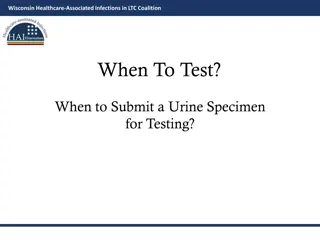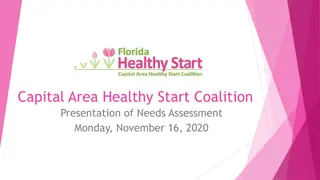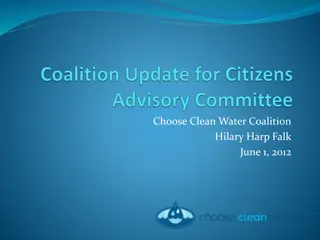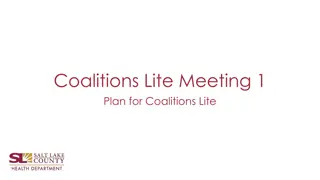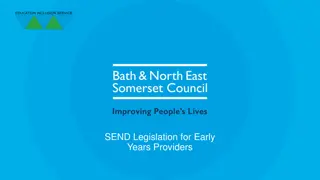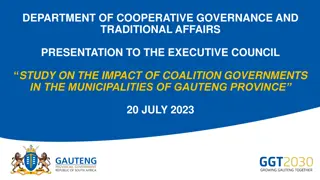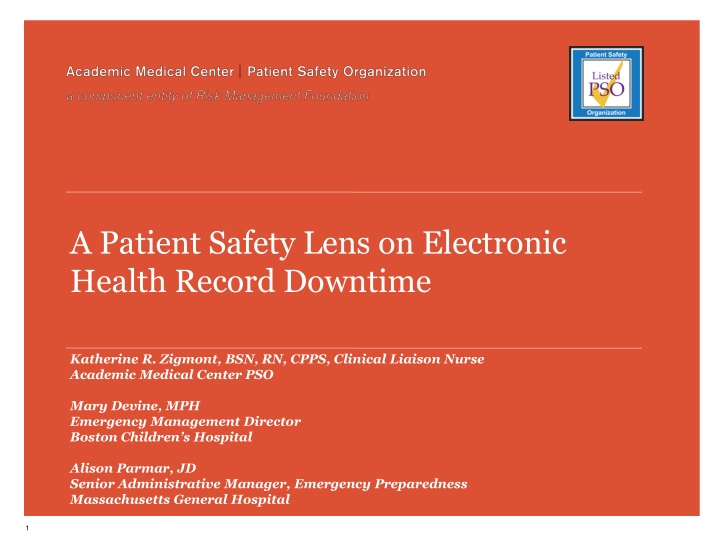
Electronic Health Record Downtime: A Patient Safety Perspective
Explore the impact of Electronic Health Record (EHR) downtime on patient safety, as discussed by healthcare professionals from various medical institutions. Discover insights on mitigating risks and fostering a culture of safety in response to EHR downtime events.
Download Presentation

Please find below an Image/Link to download the presentation.
The content on the website is provided AS IS for your information and personal use only. It may not be sold, licensed, or shared on other websites without obtaining consent from the author. If you encounter any issues during the download, it is possible that the publisher has removed the file from their server.
You are allowed to download the files provided on this website for personal or commercial use, subject to the condition that they are used lawfully. All files are the property of their respective owners.
The content on the website is provided AS IS for your information and personal use only. It may not be sold, licensed, or shared on other websites without obtaining consent from the author.
E N D
Presentation Transcript
A Patient Safety Lens on Electronic Health Record Downtime Katherine R. Zigmont, BSN, RN, CPPS, Clinical Liaison Nurse Academic Medical Center PSO Mary Devine, MPH Emergency Management Director Boston Children s Hospital Alison Parmar, JD Senior Administrative Manager, Emergency Preparedness Massachusetts General Hospital 1
Mission Statement AMC PSO The mission of the AMC PSO is to foster a culture of safety across our membership through the collection, aggregation and analysis of data. These activities serve as the foundation for convening providers, in a secure environment, to accelerate our understanding of, and implement evidence- based solutions for preventing avoidable harm. 2
AMC PSO Member Engagement Goal: Develop a member-driven, consensus-based document to support our Patient Safety and Risk leaders in engaging IT and operational leadership in the mitigation of patient safety events related to EHR Downtime events Process: Literature Review Convening of AMC PSO member subject matter experts in Information Technology, Emergency Preparedness, Clinical Operations, Risk Management and Patient Safety for further insights Develop and promulgate best practice recommendations 3
Process for Convening Creating a Culture of Caring Fostering a Culture of Safety The AMC PSO convenes members in response to high risk safety events in a secure, federal protected environment Convening sessions are built around recent adverse events/emerging patient safety risks Triggering events are carefully dissected to reveal inherent systems errors, particularly from a Culture of Safety perspective Sessions include facilitated discussions led by organizational risk and safety leaders and subject matter experts Following each meeting, actionable reports providing best practice models and summaries of key findings, are distributed across the AMC PSO 4
Why focus on EHR Downtime Background: Survey of 59 Healthcare Systems 96% of institutions reported at least one unplanned downtime 70% had at least one unplanned downtime > 8 hours Three institutions reported one or more patients were injured as a result of a downtime 70 85% had implemented practices to prepare/deal with a downtime event, but few were followed Most institutions had only partially implemented comprehensive contingency plans for unplanned downtimes* *Sittig DF, Gonzalez D, Singh H. Contingency planning for electronic health record-based care continuity: A survey of recommended practices, International Journal of Medical Informatics, July 2014. Referenced from https://www.researchgate.net/publication/264546263. 5
The Toll of Downtime 100% reliable systems do not exist Downtimes are inevitable and costly The study showed: For every minute of downtime, the average hospital spends 1.4 minutes to perform required tasks without automation 1 minute of unavailable system time = 4.5 minutes of staff time to re-enter the data once the system was operating Costs of downtime: $264/min for a 500-bed hospital $1000/min for a three hospital integrated delivery network (IDN} with 1,400 beds Over one year, each 1 percent of downtime can translated into an additional $1.4 million in operating costs for a 500 bed hospital and as much as $10 million for the IDN* *Anderson, M.: The toll of downtime. Healthcare Informatics 2002. 19:4 6
Case Example 52 yo female with PMHx of HTN, Obstructive Sleep Apnea, Congestive Heart Failure and Carotid Dissection admitted with shortness of breath and abdominal pain/distension CXR cardiomegaly and right pleural effusion Chest CT pericardial effusion, no tamponade Routine abdominal CT ordered @ 1:35 am 11:25am, patient with acute SOB, chest and abdominal pain 9:35pm, abdominal CT done but not read by Radiology due to other STAT studies Next morning, the clinical system went down for 8 hours. When provider called for Abdominal CT results, they were not read and the provider was unaware of downtime procedure for accessing results. That evening, the patient arrested. During the code, STAT read of Abdominal CT requested and critical finding of dissection of the thoracic/abdominal aorta was found. This was confirmed on autopsy. 7
Developing the Framework to Address the Issues 8
Framework Organized by Risk 1. Preparing for EHR Downtime 2. Activating EHR Downtime Response 3. Communications and Messaging Strategies 4. From Electronic to Paper-based Systems 5. Increasing Workforce Capacity and Capability 6. Monitoring Patient Safety and Quality 7. Planning for Recovery and Deactivation 8. Leveraging Lessons Learned 9
1. Preparing for EHR downtime Creating Redundant Systems Performing a System Inventory and Workflow Risk Assessment Conducting Downtime Drills 10
2. Activating EHR Downtime Response Downtime Alert and Notification Command Center Activation and Operations Establish Situational Awareness 11
3. Communication and Messaging Strategies Internal Communications External Communications During a recent downtime, there was a lot of uncertainty about the last time medications were administered. Patients and their families were uninformed and many seemed to not understand why things were more chaotic than usual and why we were not scanning medications or using the computer. Unintended Communications: Controlling and Leveraging Social Media 12
4. From Electronic to Paper-based Systems Paper Documentation Strategies and Logistics 13
4. From Electronic to Paper-based Systems (cont d) Clinically Vulnerable Areas and Workflows Pharmacy Laboratory Blood Bank Radiology and Imaging Infant Security Oncology/Critical Care/Transplant/Nutrition Services Patient Access and Identification 14
5. Increasing Workforce Capacity Recruit Additional Workforce to Meet Downtime Needs Provide Workforce Support for Extended Response 15
6. Monitoring Patient Safety and Quality Safety Event Reporting and Response EHR downtime that lasts several hours can impact safety event reporting system. There is often no predefined safety reporting process for an extended downtime and no paper version of our safety reporting forms. Management, Quality & Regulatory Reporting 16
7. Planning for Recovery and Deactivation Planning for Recovery and Deactivation System Restoration Strategies Electronic Health Record Restoration Strategies 17
8. Leveraging Lessons Learned ACTION PLAN CHECKLIST Patient Safety is included in Hotwash and After Action Review (AAR) PATIENT SAFETY PRIORITY Lessons learned are maximized and shared with all stakeholders Submit your lessons learned to the Patient Safety Organization (PSO) as Patient Safety Work Product Request a safe table convening of the AMC PSO, as needed 18
Safe Table Participation Dec Jan Feb Jun Jul Sep Dec Feb Mar Apr May 2015 2016 2017 19
Guideline Development Embodies the following premise: Developed under the auspices of the AMC PSO Consensus-based recommendations for informational purposes; not be construed or relied upon as a standard of care Promulgated as educational guidance Institutional responsibility: Read these guidelines and accept, modify or reject these recommendations based on their own institutional resources and patient populations Continue to review and modify these recommendations as the field continues to evolve 20
Examples of other Guidance Documents https://www.rmf.harvard.edu/Products-and-Services/AMC-PSO-home-page 21
Contacts Katherine Zigmont kzigmont@rmf.harvard.edu Mary Devine mary.devine@childrens.harvard.edu Alison Parmar alparmar@partners.org 22







